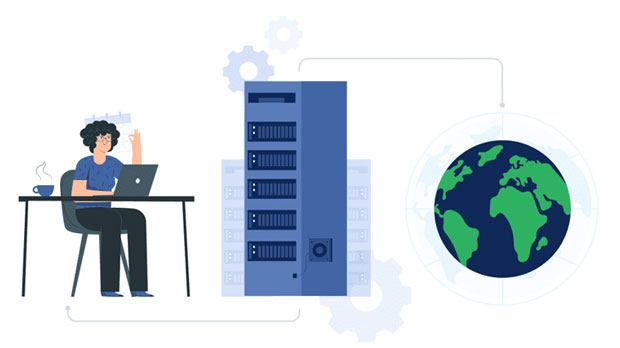When selecting a static proxy solution for a long-term project, two prominent options emerge: naproxy and PYPROXY. Both are effective in their own ways, but their features and capabilities cater to different needs and environments. naproxy is well-regarded for its flexibility and ease of integration, while pyproxy offers high scalability and robust performance for more demanding applications. This article delves into a detailed comparison of these two static proxy solutions, highlighting their strengths, weaknesses, and suitability for long-term projects. We will analyze their performance, ease of use, scalability, and long-term viability to help determine the best fit for developers and businesses. 1. Overview of naproxy and pyproxyBoth naproxy and pyproxy are proxy solutions designed to optimize network traffic, enhance security, and ensure better performance. However, they differ significantly in their architectures, performance metrics, and the types of projects they are best suited for. - naproxy: naproxy is a lightweight Python-based proxy server known for its flexibility. It is open-source, highly customizable, and supports multiple protocols. It is typically favored by developers who require a more hands-on approach to configuration and implementation. - pyproxy: pyproxy, on the other hand, is a more robust solution that is designed for high-performance scenarios. It is well-suited for projects requiring high throughput, scalability, and advanced routing capabilities. pyproxy’s architecture is optimized for handling large volumes of data efficiently and is more stable for long-term deployment.2. Performance ComparisonPerformance is a key criterion when evaluating any proxy for long-term usage. A proxy's ability to manage heavy traffic, respond to network requests, and maintain a consistent connection is crucial in a production environment.- naproxy Performance: naproxy, being a Python-based solution, might not offer the raw performance of more optimized languages like C++ or Go. While it handles moderate traffic well, it may struggle under heavy loads due to the inherent limitations of Python’s single-threaded model. For a long-term project, this could translate to performance bottlenecks if the application scales significantly over time.- pyproxy Performance: pyproxy excels in performance, especially in handling large-scale deployments. It is designed for performance and can manage high traffic volumes without significant degradation. The underlying architecture leverages multi-threading and optimized handling of concurrent connections, which makes it suitable for large-scale, high-demand environments. For a long-term project where performance consistency is critical, pyproxy provides a more reliable solution.3. Scalability and FlexibilityScalability is another essential factor in long-term projects. As projects grow, the proxy solution must be able to scale without compromising on speed or reliability.- naproxy Scalability: While naproxy is relatively flexible in its design and allows customization, its scalability is somewhat limited by the Python environment. For a small to medium-sized project, naproxy might be a great option, but as the project expands, developers may face challenges in scaling it to meet growing demands. This could lead to increased maintenance overhead and potential performance degradation in the long term.- pyproxy Scalability: pyproxy is built with scalability in mind. It is designed to handle large numbers of concurrent requests with ease. The system supports distributed architectures, allowing it to scale horizontally as needed. This makes it an ideal choice for long-term projects that anticipate rapid growth or require continuous expansion. pyproxy's ability to scale without compromising performance makes it a more future-proof option.4. Security FeaturesSecurity is always a critical concern when selecting any network infrastructure component. A proxy must ensure secure connections, protect against attacks, and enforce policies.- naproxy Security: naproxy provides basic security features, including support for SSL/TLS encryption. However, its security features are limited compared to more advanced solutions. Developers using naproxy must often rely on external libraries or integrate additional security measures, which can increase complexity.- pyproxy Security: pyproxy offers more advanced security features out-of-the-box. These include integrated SSL/TLS support, advanced filtering, and protection against DDoS attacks. Additionally, pyproxy’s robust routing and traffic management capabilities can help mitigate security risks, especially in high-stakes environments. For long-term projects that prioritize security, pyproxy offers a more comprehensive and ready-to-use security infrastructure.5. Ease of Use and SetupFor many developers, the ease of use and setup of a proxy server can determine how quickly it can be deployed and maintained. While both solutions offer different configurations, they vary in user-friendliness.- naproxy Ease of Use: naproxy’s flexibility is both its strength and its challenge. While it offers a high degree of customization, it requires a deeper understanding of the underlying Python code and networking concepts. For developers who are comfortable with Python, this can be a great advantage. However, for those new to proxy setups, the learning curve can be steep. Additionally, as the project evolves, naproxy might require more hands-on maintenance.- pyproxy Ease of Use: pyproxy provides a more user-friendly experience compared to naproxy. Its configuration is simpler, and many of its advanced features can be enabled with minimal setup. For long-term projects, this ease of use can reduce the ongoing operational burden and minimize downtime due to configuration errors. pyproxy’s documentation and support also make it easier for developers to maintain the system over time.6. Long-Term Viability and Community SupportThe long-term viability of a proxy solution is crucial for any project. A proxy that is no longer actively supported can create significant risks down the road.- naproxy Viability: naproxy is open-source and relies heavily on community contributions for updates and bug fixes. While this means that the project is constantly evolving, it can also lead to periods of stagnation if the community’s focus shifts. For a long-term project, this could lead to challenges with keeping the proxy up-to-date or addressing unforeseen issues.- pyproxy Viability: pyproxy, being a more established and commercially supported solution, has a stronger long-term viability. It receives regular updates, and its development is actively managed by a dedicated team. Additionally, enterprises using pyproxy have access to professional support, making it a more reliable option for mission-critical applications.7. Cost ConsiderationsWhile both naproxy and pyproxy offer valuable features, cost is an important factor for long-term projects, especially for startups or businesses with limited budgets.- naproxy Costs: As an open-source solution, naproxy is free to use. However, the associated costs come from the maintenance, development, and troubleshooting required due to its manual configuration. For small teams with Python expertise, these costs can be manageable, but for larger projects, they can accumulate over time.- pyproxy Costs: pyproxy offers both free and paid versions, with the paid versions providing advanced features and enterprise-level support. The costs can be higher than naproxy, but for large-scale and long-term projects, this investment may be justified by the increased performance, security, and scalability.8. Conclusion: Which Proxy is Best for Long-Term Projects?Choosing between naproxy and pyproxy depends largely on the scale, complexity, and security needs of your project. - naproxy is well-suited for smaller projects or for teams that require a highly customizable proxy solution and are comfortable with Python. It is ideal for medium-sized projects where flexibility and cost are more important than raw performance and scalability.- pyproxy, however, is the better choice for large-scale, long-term projects that require high performance, scalability, and security. Its robust architecture, ease of use, and active support make it more suitable for environments where reliability and future growth are priorities.In conclusion, for a long-term project where scalability, performance, and security are crucial, pyproxy is the more suitable choice.
Oct 24, 2025



































































